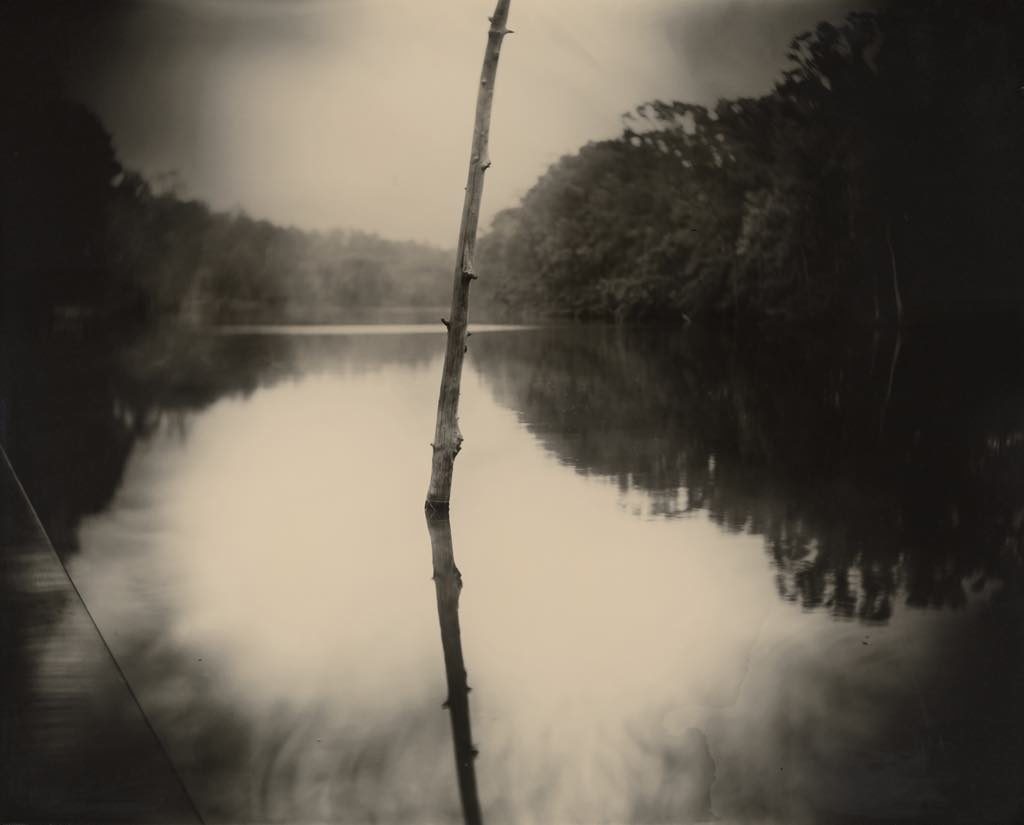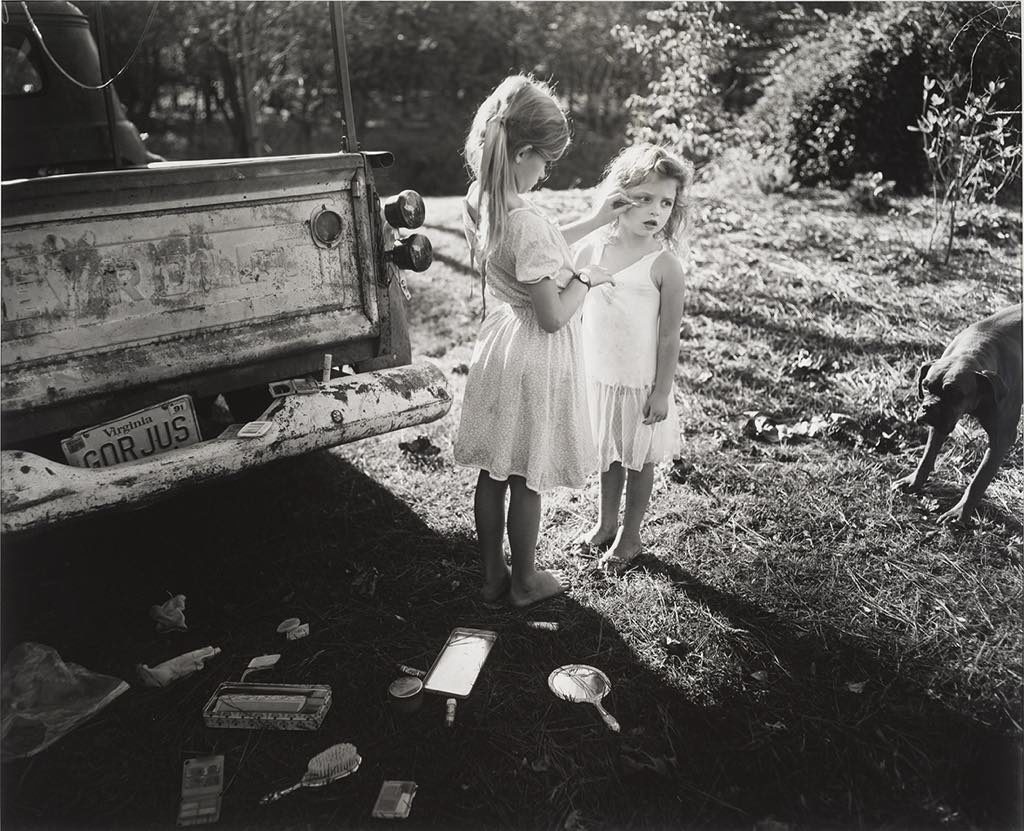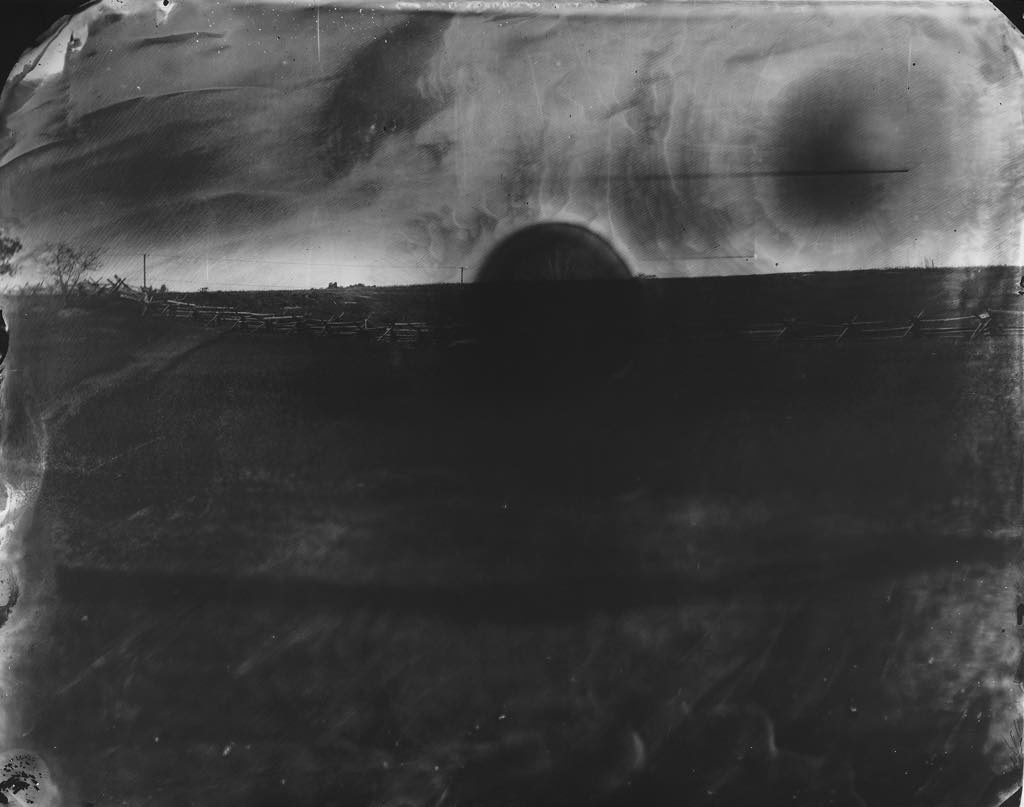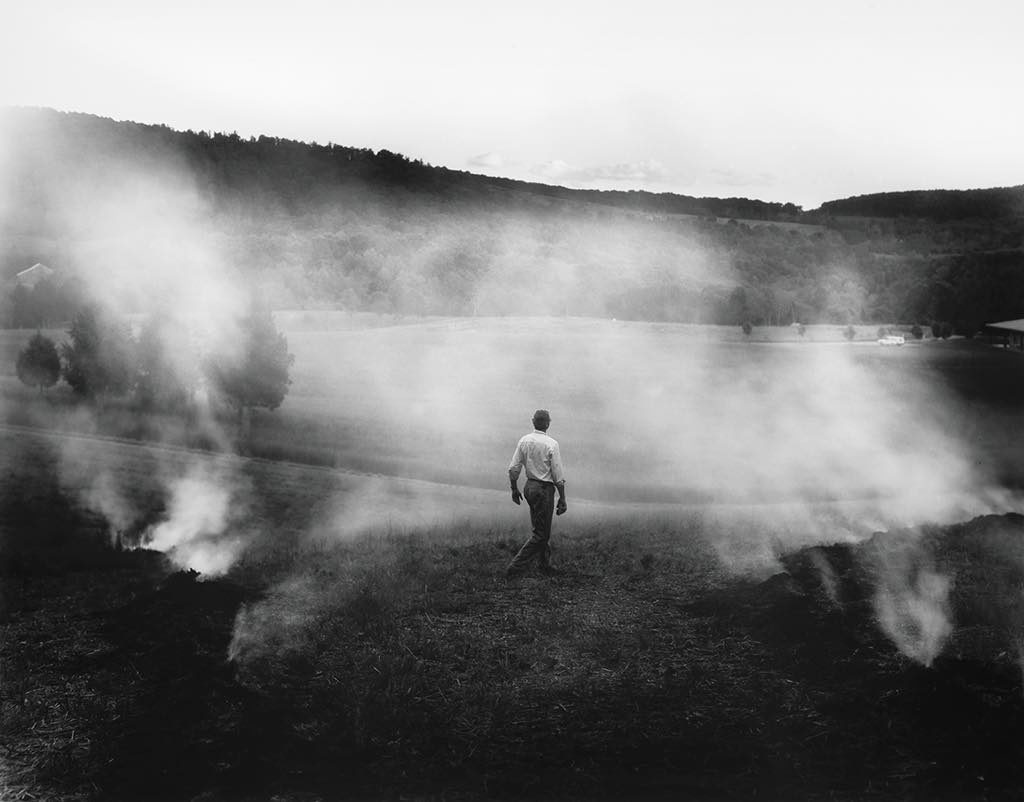
Much to her regret, Sally Mann first became famous, or should I say infamous, with the photos she took of her young children in the 1980s and ‘90s as they ran around the family’s country property in the summer, often naked. As innocent as it seemed to her at the time, she says she wouldn’t have done it if she knew what she knows today, and she advises other photographers to avoid making similar images. “I was almost arrested,” she told the audience during an interview at the Jeu de Paume in Paris, which is currently holding a retrospective of her work, “Sally Mann: A Thousand Crossings.”

Those photos of her kids make up the first section of the exhibition and, while there is certainly nothing explicitly sexual about them, there is almost always something disturbing or foreboding: a little girl making up another little girl while a dog on the edge of the picture looks ready to attack; a boy covered in blood from a nosebleed; a girl resting in a lawn chair, unaware that an alligator (luckily, a toy one) is lurking menacingly on the ground behind her; a boy lying in a narrow, muddy ditch, his arms and legs bent, as if they have been partly amputated or as if he is squeezing through the birth canal, while other, older children stand over him watching, arms crossed, in seeming indifference.
Eventually, Mann’s children tired of posing for her pictures, and she tired of photographing them. This is when the photographer, a child of the American South, where most of her photos have been taken, started making black-and-white landscapes using a large-format 8×10 camera and allowing faulty equipment and technical errors to have their way with her negatives and prints, often using the 19th-century wet collodion process. The results are often beautiful and poignant.
What look like pure, rather spooky landscapes, with their rich, deep blacks and atmospheric lighting, turn out to almost always have a political undertow.

For one evocative series, “Last Measure,” she visited the battlefields of the Civil War to see how death “has sculpted this ravishing landscape and will hold title to it for all time.”
“Bridge on Tallahatchie” (1998), an image from another series, shows the spot where the body of 14-year-old Emmett Till, murdered after supposedly flirting with a white woman, may have been thrown into the river. “In the foreground,” write the curators, “a skeletal branch reaches in from the left like the scrawny-fingered hand of death, and just below it a seemingly careless chemical streak evokes a teardrop moving through the emulsion.”

These images can stand on their own as beautiful, moody, mysterious landscapes, but such commentaries explaining the motivation behind them add depth and meaning. Full credit goes to American curators Sarah Greenough and Sarah Kennel for their exceptionally clear, interesting and well-written commentary. French curators would do well to take a lesson from them. And everyone would do well to see this moving exhibition.
Favorite
I saw this exhibition in Washington DC, and I now live in Lexington VA, which is also the home of the late Cy Twombly. Not bad for a city of only 8,000.